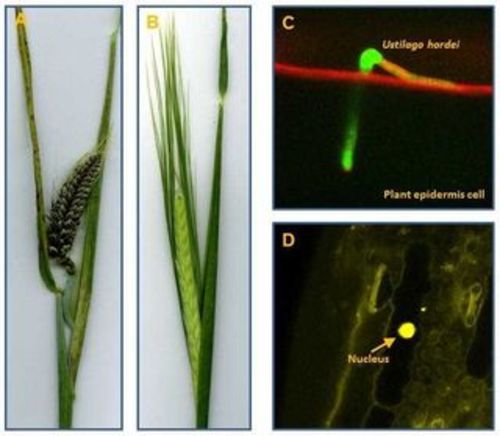Ustilago maydis is a highly developed model system with excellent resources available. Besides this system, our research interest is expanding to other biotrophic interactions. One system that has already been established in the lab is Ustilago hordei. This biotroph causes covered smut in barley. In contrast to U. maydis, it does not lead to local symptoms at infection sites. Infection by U. hordei remains largely symptom-free until flowering of the plant, where seeds are replaced by fungal spores (Figure 5). Like for U. maydis, also U. hordei is amenable to reverse genetic approaches, which allows heterologous protein expression. Similarly, also its host plant barley can be used for both transient and stable expression studies (Figure 5). Our research on U. hordei currently focusses on the functional characterization of effector proteins with relevant biological functions during host infection. Moreover, we aim to establish this fungus as an expression system for putative effectors of obligate biotrophs such as Blumeria graminis, which are not accessible to reverse genetics.

Figure 5. The Ustilago hordei-barley pathosystem. A) U. hordei infected barley plant. B) Mock inoculated barley plant. C) Life cell imaging showing the penetration of eGFP expressing U. hordei in a barley epidermis cell. D) Ballistic transformation of a barley cell to localize YFP-tagged protein in nucleus.